Top Color Missteps Parents Make in Nursery Designs: What to Watch Out for
Designing a nursery is an interesting adventure, with dreams of cozy cuddles and sweet lullabies. But amid all the excitement, it’s essential to keep in mind the effect that color can have on your little one. From affecting their mood and sleep patterns to stimulating their senses, color plays a significant role in nursery design. Ideas for your nursery room are plenty, which is why it’s easy to get carried away with bold color choices that might not always lead to the peaceful atmosphere you envision. A splash of vibrant colors might seem perfect in theory, but those bold decisions can sometimes miss the mark when creating a soothing environment for your little one. If you’re embarking on this delightful journey or planning a nursery makeover, you’ll want to avoid common color missteps many parents stumble upon. Let’s dive into the pitfalls that could turn your dream nursery into a colorful conundrum.
Overloading on Bright Colors
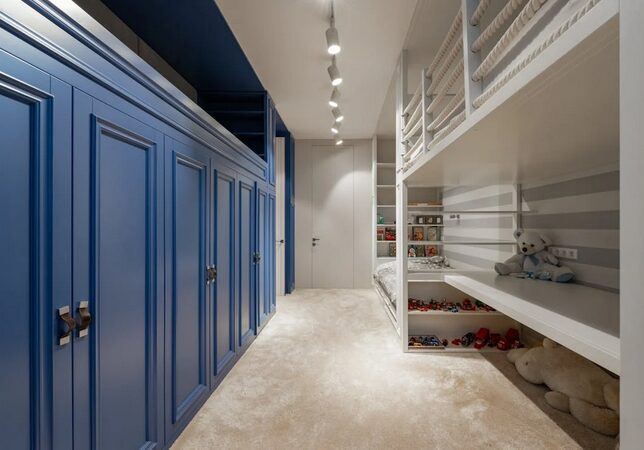
Bright colors can be incredibly appealing. They grab attention and energize a space. However, moderation is key when it comes to nursery design. Overloading on vibrant hues might seem fun at first. But too much brightness can overwhelm both you and your baby. It creates an overstimulating environment that may interfere with relaxation and sleep. Instead of painting all four walls in bold shades, consider using them sparingly. A bright accent wall paired with softer tones creates balance while offering visual interest. Think about the furniture and accessories as well. A few colorful toys or cushions can add pops of color without drowning the room in intensity.
Ignoring the Impact of Color Psychology
Color psychology is a powerful tool that many parents overlook when designing their nursery. The colors you select can significantly impact your child’s mood and behavior. For instance, greens and soft blues create a calming environment ideal for sleep, while vibrant reds or yellows may evoke excitement or energy. A room painted in stimulating hues might lead to restlessness at bedtime. Understanding how different shades influence emotions can help you craft the perfect space for both play and relaxation. Consider including gentle pastels alongside playful accents rather than overwhelming brightness.
Choosing Trendy Over Timeless Shades
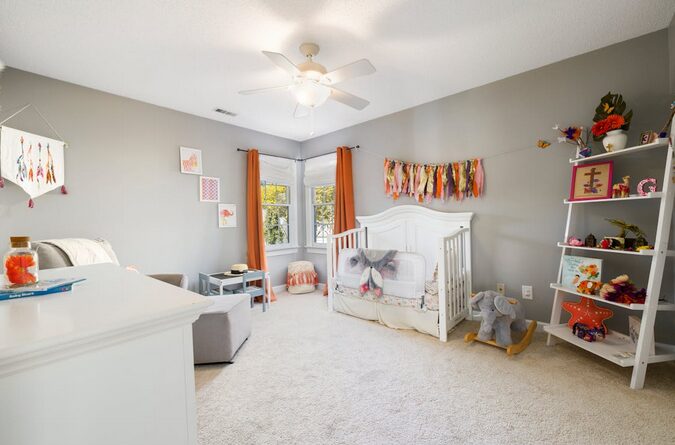
Trendy colors can be tempting. They promise a fresh, modern feel to your nursery. However, trends often fade as quickly as they appear. Choosing a shade in vogue today may not resonate with your child’s tastes tomorrow. What seems chic now could look dated in just a few years. Babies grow fast, and their spaces should evolve, too. Consider timeless palettes instead. Soft pastels or neutrals provide versatility while remaining stylish across seasons and trends. These shades create a serene environment conducive to rest and play. Combining trendy accents with classic colors can also strike the right balance. This way, you enjoy current styles without committing entirely to them.
Forgetting About Natural and Artificial Lighting
Lighting can break or make a room, especially in a nursery. Many parents focus solely on color schemes and furniture, overlooking how lighting interacts with those choices. Natural light brings warmth and positivity. Sunny days can dramatically shift the space’s mood. Darker colors may absorb too much light, creating an overly somber atmosphere. Artificial lighting is equally important. A single overhead fixture often isn’t enough for nighttime feedings or diaper changes. …





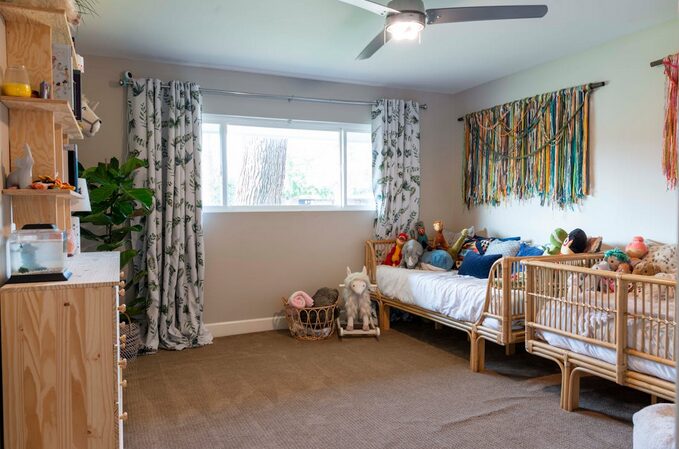




 When considering initial construction costs, prefab houses often shine as a budget-friendly option. They are manufactured in controlled environments, reducing labor expenses and minimizing waste. This streamlined process can lead to significant savings. On the other hand, architect-designed homes typically come with higher upfront costs. Customization requires skilled labor and unique materials, which drive up the price tag. Each design element adds to the overall expense. However, it’s essential to look beyond just the numbers when evaluating these options.
When considering initial construction costs, prefab houses often shine as a budget-friendly option. They are manufactured in controlled environments, reducing labor expenses and minimizing waste. This streamlined process can lead to significant savings. On the other hand, architect-designed homes typically come with higher upfront costs. Customization requires skilled labor and unique materials, which drive up the price tag. Each design element adds to the overall expense. However, it’s essential to look beyond just the numbers when evaluating these options. When considering the long-term value of prefab houses versus architect-designed homes, several factors come into play. Prefab houses often offer a quicker return on investment due to their lower initial costs and faster construction timelines. This can be typically appealing for first-time buyers or those looking to minimize financial risk. …
When considering the long-term value of prefab houses versus architect-designed homes, several factors come into play. Prefab houses often offer a quicker return on investment due to their lower initial costs and faster construction timelines. This can be typically appealing for first-time buyers or those looking to minimize financial risk. …



 Efficiency is the cornerstone of prefabricated homes. The controlled environment of factory production minimizes delays caused by weather conditions, streamlining the construction process and reducing project timelines by significant margins. The precision of manufacturing ensures a higher degree of accuracy, minimizing material wastage and fostering a more sustainable approach to building. Embracing prefabricated homes is a step towards a greener future. The streamlined construction process reduces environmental impact by optimizing material usage and decreasing transportation needs. Furthermore, the ability to integrate eco-friendly technologies like solar panels, efficient insulation, and rainwater harvesting systems into the prefab modules enhances their sustainability quotient.
Efficiency is the cornerstone of prefabricated homes. The controlled environment of factory production minimizes delays caused by weather conditions, streamlining the construction process and reducing project timelines by significant margins. The precision of manufacturing ensures a higher degree of accuracy, minimizing material wastage and fostering a more sustainable approach to building. Embracing prefabricated homes is a step towards a greener future. The streamlined construction process reduces environmental impact by optimizing material usage and decreasing transportation needs. Furthermore, the ability to integrate eco-friendly technologies like solar panels, efficient insulation, and rainwater harvesting systems into the prefab modules enhances their sustainability quotient.
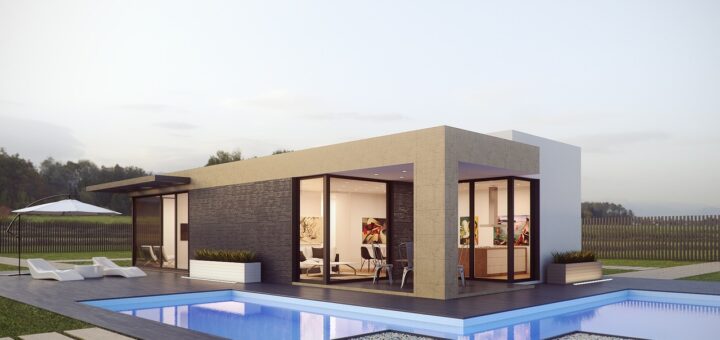
 One of the initial hidden costs associated with prefab homes is site preparation. Before your prefab home can be installed, the building site needs to be adequately prepared. This includes clearing the land, leveling the foundation, and connecting utilities. Site preparation costs can vary significantly based on the land’s condition and the site’s location. It’s essential to carefully consider these costs and budget accordingly before purchasing a prefab home.
One of the initial hidden costs associated with prefab homes is site preparation. Before your prefab home can be installed, the building site needs to be adequately prepared. This includes clearing the land, leveling the foundation, and connecting utilities. Site preparation costs can vary significantly based on the land’s condition and the site’s location. It’s essential to carefully consider these costs and budget accordingly before purchasing a prefab home. To ensure a smooth and budget-friendly experience with your prefab
To ensure a smooth and budget-friendly experience with your prefab 
 When it comes to investing in a new roof, durability and longevity should be at the top of your checklist. High-quality roofing materials are designed to withstand the test of time and the harsh elements that Mother Nature throws at them. One key advantage of choosing durable roofing materials is that they can save you money in the long run. While cheaper options may seem like a cost-effective choice upfront, they often require frequent repairs or even replacement within a short span of time.
When it comes to investing in a new roof, durability and longevity should be at the top of your checklist. High-quality roofing materials are designed to withstand the test of time and the harsh elements that Mother Nature throws at them. One key advantage of choosing durable roofing materials is that they can save you money in the long run. While cheaper options may seem like a cost-effective choice upfront, they often require frequent repairs or even replacement within a short span of time. When it comes to protecting your home, investing in high-quality roofing materials is essential. The right materials can provide enhanced protection against various external elements such as harsh weather conditions, UV rays, and even potential intruders. One of the primary benefits of using high-quality roofing materials is their ability to withstand extreme weather conditions.
When it comes to protecting your home, investing in high-quality roofing materials is essential. The right materials can provide enhanced protection against various external elements such as harsh weather conditions, UV rays, and even potential intruders. One of the primary benefits of using high-quality roofing materials is their ability to withstand extreme weather conditions. An often-overlooked factor when it comes to investing in high-quality roofing materials is the sound insulation they provide. A sturdy, well-constructed roof can significantly reduce outside noise pollution and create a peaceful and quiet living environment inside your home. Imagine enjoying a calm morning cup of coffee without being disrupted by the sounds of traffic or noisy neighbors. With high-quality roofing materials, you can experience just that. …
An often-overlooked factor when it comes to investing in high-quality roofing materials is the sound insulation they provide. A sturdy, well-constructed roof can significantly reduce outside noise pollution and create a peaceful and quiet living environment inside your home. Imagine enjoying a calm morning cup of coffee without being disrupted by the sounds of traffic or noisy neighbors. With high-quality roofing materials, you can experience just that. …







 The brand is one of the most important factors when shopping for new kitchen appliances. It’s important to research and find out which brands are reliable and offer good customer service. Doing your research can save you time, money, and hassle in the long run. Therefore, when it’s time to purchase new kitchen appliances, keep in mind your needs as a cook. If you primarily make simple meals, then budget-friendly and basic models will suffice. Those who frequently entertain guests or cook large family dinners may consider higher-end products with more features.
The brand is one of the most important factors when shopping for new kitchen appliances. It’s important to research and find out which brands are reliable and offer good customer service. Doing your research can save you time, money, and hassle in the long run. Therefore, when it’s time to purchase new kitchen appliances, keep in mind your needs as a cook. If you primarily make simple meals, then budget-friendly and basic models will suffice. Those who frequently entertain guests or cook large family dinners may consider higher-end products with more features.
 Reverse osmosis filters are designed to remove impurities from your water. This includes contaminants like lead, chlorine, and iron. By removing these contaminants, you can improve your water quality and make it safer to drink. In addition, such filters remove sediment and bacteria from your water, making it safer to consume.
Reverse osmosis filters are designed to remove impurities from your water. This includes contaminants like lead, chlorine, and iron. By removing these contaminants, you can improve your water quality and make it safer to drink. In addition, such filters remove sediment and bacteria from your water, making it safer to consume. Another benefit of reverse osmosis filters is that they can provide water on demand. This means you won’t have to wait for your tap water to be filtered before you can use it. You can turn on the filter and get filtered water whenever you need it. It can be beneficial if you live in an area with hard water. With a reverse osmosis filter, you can get filtered water without having to wait for the water to be softened.
Another benefit of reverse osmosis filters is that they can provide water on demand. This means you won’t have to wait for your tap water to be filtered before you can use it. You can turn on the filter and get filtered water whenever you need it. It can be beneficial if you live in an area with hard water. With a reverse osmosis filter, you can get filtered water without having to wait for the water to be softened. One of the key benefits of using a reverse osmosis filter is that it results in better-tasting food and drinks. This is because the impurities that can cause problems with your water quality are removed. It means that your water will taste fresher and cleaner. Additionally, you may find that your coffee or tea tastes better when you use water filtered with a reverse osmosis filter.
One of the key benefits of using a reverse osmosis filter is that it results in better-tasting food and drinks. This is because the impurities that can cause problems with your water quality are removed. It means that your water will taste fresher and cleaner. Additionally, you may find that your coffee or tea tastes better when you use water filtered with a reverse osmosis filter.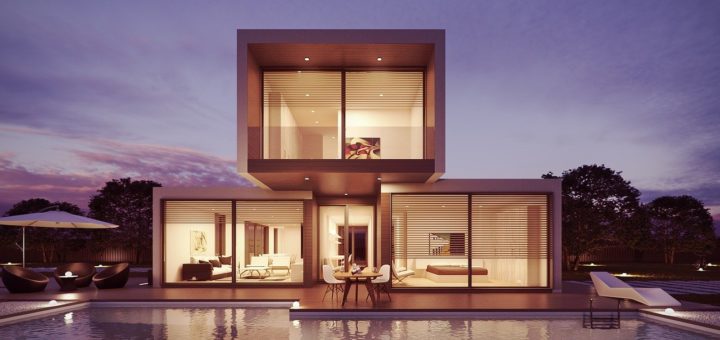

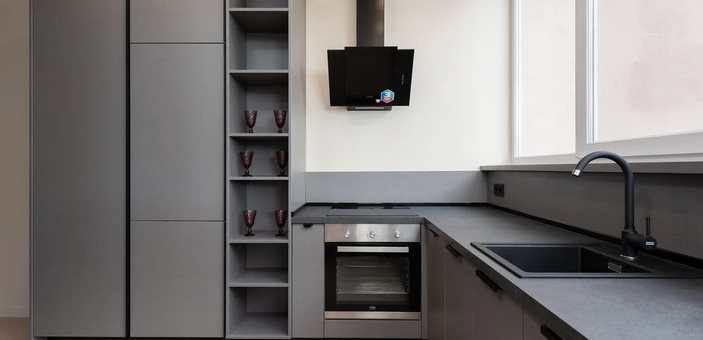
 The first step to take is to ensure the property is clean. This means de-cluttering and deep cleaning. You want buyers to be able to see themselves living in the home, and this can be difficult if the space is cluttered or dirty. You may need to hire a professional cleaning service to help you get the job done quickly and efficiently. Cleanliness is very important so you can sell the property quickly.
The first step to take is to ensure the property is clean. This means de-cluttering and deep cleaning. You want buyers to be able to see themselves living in the home, and this can be difficult if the space is cluttered or dirty. You may need to hire a professional cleaning service to help you get the job done quickly and efficiently. Cleanliness is very important so you can sell the property quickly. Once you have cleaned and repaired the property, it is time to set the right price. This can be tricky, as you don’t want to overprice or underprice your home. You will want to look at comparable properties in the area to get an idea of a fair price. You may also want to consult with a real estate agent to get a professional opinion. This is very important because it could take much longer to sell the property if you set the wrong price.
Once you have cleaned and repaired the property, it is time to set the right price. This can be tricky, as you don’t want to overprice or underprice your home. You will want to look at comparable properties in the area to get an idea of a fair price. You may also want to consult with a real estate agent to get a professional opinion. This is very important because it could take much longer to sell the property if you set the wrong price.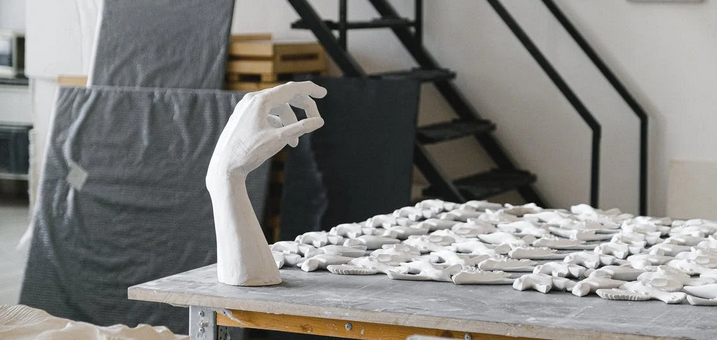
 One of the best reasons to start a business from home is that you can be your own boss. It gives you control over your work schedule and how you run your business. You don’t have to answer anyone else, which can be very liberating.
One of the best reasons to start a business from home is that you can be your own boss. It gives you control over your work schedule and how you run your business. You don’t have to answer anyone else, which can be very liberating. Another great reason to start a business from home is that you can have more flexibility in your schedule. It can be especially helpful if you have young children or care for an elderly parent. You can work when it’s convenient for you, which can help you avoid the stress of a traditional job.
Another great reason to start a business from home is that you can have more flexibility in your schedule. It can be especially helpful if you have young children or care for an elderly parent. You can work when it’s convenient for you, which can help you avoid the stress of a traditional job. Finally, one of the best reasons to start a business from home is that you can stay connected with your colleagues and clients. This can be especially helpful if you’re working in a field where collaboration is essential. You can easily communicate with your team without having to leave your house. And you can easily meet with clients without going to an office.
Finally, one of the best reasons to start a business from home is that you can stay connected with your colleagues and clients. This can be especially helpful if you’re working in a field where collaboration is essential. You can easily communicate with your team without having to leave your house. And you can easily meet with clients without going to an office.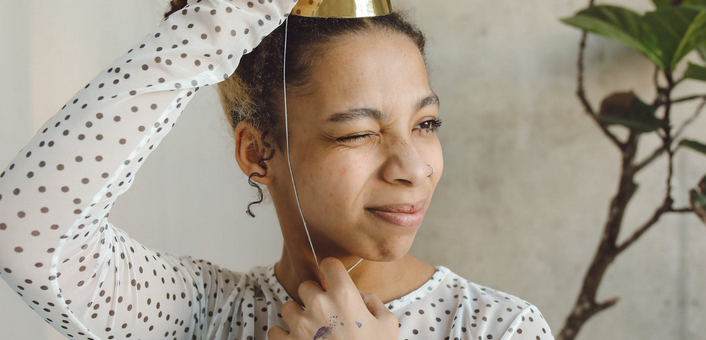
 Whether it’s cocktails, beer, or wine, create a special drink that will be associated with your party. A good response from the guest would be when they want you to stay behind the bar and keep dishing out drinks.
Whether it’s cocktails, beer, or wine, create a special drink that will be associated with your party. A good response from the guest would be when they want you to stay behind the bar and keep dishing out drinks.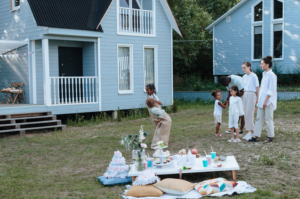 Games always help break the ice and make for a more enjoyable party experience for everyone involved. Whether it’s giant Jenga, Twister, or Charades, you want to make sure that the game accommodates all of your guests.
Games always help break the ice and make for a more enjoyable party experience for everyone involved. Whether it’s giant Jenga, Twister, or Charades, you want to make sure that the game accommodates all of your guests. Have you ever been to a party and had no idea what was going on? Or maybe the people there didn’t seem very friendly? We know what that feels like, so we’re here with some tips for making it interactive.
Have you ever been to a party and had no idea what was going on? Or maybe the people there didn’t seem very friendly? We know what that feels like, so we’re here with some tips for making it interactive.
 So, you may be wondering, what is a reverse osmosis system? Reverse osmosis systems are filtering devices used to remove contaminants from water. It’s an effective way of purifying your drinking water at home since it can reduce up to 98% of the impurities found in tap water. When it comes to removing contaminants and pollutants from water, reverse osmosis is one of the best filtration systems out there. How does it work? Reverse osmosis systems use a semipermeable membrane to remove contaminants from the water.
So, you may be wondering, what is a reverse osmosis system? Reverse osmosis systems are filtering devices used to remove contaminants from water. It’s an effective way of purifying your drinking water at home since it can reduce up to 98% of the impurities found in tap water. When it comes to removing contaminants and pollutants from water, reverse osmosis is one of the best filtration systems out there. How does it work? Reverse osmosis systems use a semipermeable membrane to remove contaminants from the water.
 If you want to rent to own a property, you must understand the rental agreement term. It is typically for a set number of years, and if you don’t want to purchase the home at the end of that time, you will need to move out. Make sure you are comfortable with this commitment before signing anything! Moreover, if you are looking to establish roots, this might not be the best choice for you.
If you want to rent to own a property, you must understand the rental agreement term. It is typically for a set number of years, and if you don’t want to purchase the home at the end of that time, you will need to move out. Make sure you are comfortable with this commitment before signing anything! Moreover, if you are looking to establish roots, this might not be the best choice for you. If you decide to rent to own a property, any money paid towards purchasing the home must be credited back in full at some point. If this doesn’t happen and you’re forced out for whatever reason, then your efforts will have been useless! Make sure your agreement includes this type of credit before signing anything. If you’re looking to purchase a home in the future and want to start building equity now, consider a rent-to-own agreement. These agreements typically last between two and four years, and at the end of the term, you will need to decide
If you decide to rent to own a property, any money paid towards purchasing the home must be credited back in full at some point. If this doesn’t happen and you’re forced out for whatever reason, then your efforts will have been useless! Make sure your agreement includes this type of credit before signing anything. If you’re looking to purchase a home in the future and want to start building equity now, consider a rent-to-own agreement. These agreements typically last between two and four years, and at the end of the term, you will need to decide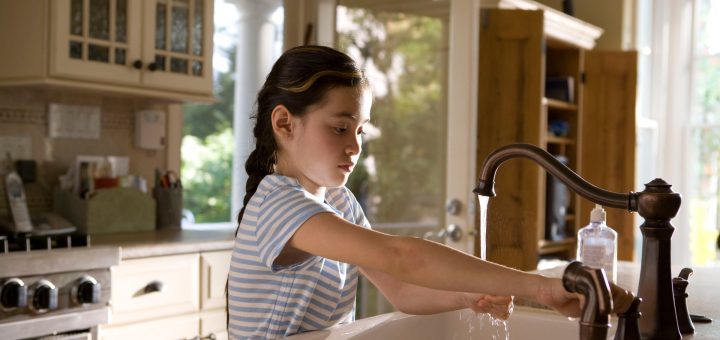
 Scale is another build-up that can occur as a result of hard water. It is a deposit of minerals that forms on fixtures like taps, faucets, showerheads, and appliances like dishwashers and washing machines. It can be challenging to remove and can lead to decreased efficiency of these appliances.
Scale is another build-up that can occur as a result of hard water. It is a deposit of minerals that forms on fixtures like taps, faucets, showerheads, and appliances like dishwashers and washing machines. It can be challenging to remove and can lead to decreased efficiency of these appliances. Chlorine smells terrible, which means clothes smell bad if washed in chlorine-treated tap water. Another issue you’ll probably have if you live in an area with hard water is softness problems for your clothes and towels. The minerals in hard water react with the compounds in laundry detergents and fabric softeners to form a residue on your clothes and towels, making them feel stiff.
Chlorine smells terrible, which means clothes smell bad if washed in chlorine-treated tap water. Another issue you’ll probably have if you live in an area with hard water is softness problems for your clothes and towels. The minerals in hard water react with the compounds in laundry detergents and fabric softeners to form a residue on your clothes and towels, making them feel stiff.
 First off, make sure the vents are not clogged by dust or pet hair and that they’re pointing in a direction where there will be circulation. Then, take a look at the airflow. Make sure it’s coming from the vents. If there isn’t any, you may have a refrigerant leak or low airflow due to clogs or dirty filters that need to be changed immediately.
First off, make sure the vents are not clogged by dust or pet hair and that they’re pointing in a direction where there will be circulation. Then, take a look at the airflow. Make sure it’s coming from the vents. If there isn’t any, you may have a refrigerant leak or low airflow due to clogs or dirty filters that need to be changed immediately. Another way you can check if your AC is in good working order is by checking your home’s temperature. If it’s hot and humid, don’t immediately jump to conclusions that your AC isn’t cooling down correctly because there could be some reasons for this, such as the humidity outside or too many appliances running inside.
Another way you can check if your AC is in good working order is by checking your home’s temperature. If it’s hot and humid, don’t immediately jump to conclusions that your AC isn’t cooling down correctly because there could be some reasons for this, such as the humidity outside or too many appliances running inside.
 Professional contractors will be able to offer you fast results. When’s the last time it rained after you’ve cleaned your roof yourself? Well, you can expect the same thing when working with professionals – they will have all their tools ready and waiting so that once done, they can take care of any remaining stains before the next rainfall. Hiring an expert ensures that you’ll be satisfied while they clean your roof with ease.
Professional contractors will be able to offer you fast results. When’s the last time it rained after you’ve cleaned your roof yourself? Well, you can expect the same thing when working with professionals – they will have all their tools ready and waiting so that once done, they can take care of any remaining stains before the next rainfall. Hiring an expert ensures that you’ll be satisfied while they clean your roof with ease.

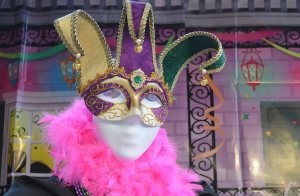 After learning the basics, it’s time for some preparation. To build a nice house float, you need some materials and tools. First, you are going to need Mardi Gras beads. Mardi Gras beads are available in different colors and also shapes. You can use them as costume accessories or create beautiful Mardi Gras masks, necklaces, crowns, etc. Covers are also necessary to make your Mardi Grass house float even more colorful and attractive. Some paints will help paint the exterior of your Mardi Gras house floats. Depending on what you prefer most, you may get them from a craft store near you or purchase them online. The tools are simple. You just need your hands, paintbrushes, some screwdrivers, a hammer, cutting tools, glue, tape, and many more.
After learning the basics, it’s time for some preparation. To build a nice house float, you need some materials and tools. First, you are going to need Mardi Gras beads. Mardi Gras beads are available in different colors and also shapes. You can use them as costume accessories or create beautiful Mardi Gras masks, necklaces, crowns, etc. Covers are also necessary to make your Mardi Grass house float even more colorful and attractive. Some paints will help paint the exterior of your Mardi Gras house floats. Depending on what you prefer most, you may get them from a craft store near you or purchase them online. The tools are simple. You just need your hands, paintbrushes, some screwdrivers, a hammer, cutting tools, glue, tape, and many more.
 You can make your water filter. These surprisingly useful innovations could make your water safe to drink for up to 12 years. Yes, you can make the best water filtration system for your home. You are confident that your water is cleaner than other people.
You can make your water filter. These surprisingly useful innovations could make your water safe to drink for up to 12 years. Yes, you can make the best water filtration system for your home. You are confident that your water is cleaner than other people. This book will teach you how to filter your tap water to make it clean and healthy. It removes parasites, bacteria, and other inorganic mineral contaminants that can dramatically affect your health. You can make your drinking water filter at home. It has many advantages.
This book will teach you how to filter your tap water to make it clean and healthy. It removes parasites, bacteria, and other inorganic mineral contaminants that can dramatically affect your health. You can make your drinking water filter at home. It has many advantages.



 One of the ways to find the best roofing company is to do some general research. Find out if they are available when you need them and how much experience they have. If they can provide more information, keep it in mind for later. You never know what information may be convenient in the long run. This is one of the things that can help you find the best companies around.
One of the ways to find the best roofing company is to do some general research. Find out if they are available when you need them and how much experience they have. If they can provide more information, keep it in mind for later. You never know what information may be convenient in the long run. This is one of the things that can help you find the best companies around. The moment you understand the general advice about roofing companies, you can begin to rule out the possibilities. If you’ve had negative experiences during your research, cross them off your list. If they treat them poorly, know that you should not work with them. If you’ve had positive experiences, cross those names off your list, but keep an open mind.
The moment you understand the general advice about roofing companies, you can begin to rule out the possibilities. If you’ve had negative experiences during your research, cross them off your list. If they treat them poorly, know that you should not work with them. If you’ve had positive experiences, cross those names off your list, but keep an open mind. Finally, you can narrow down your choices to three or even four possible roofing contractors. The moment you have a good feeling about some of the selections, start scheduling consultations. Most companies offer them for free. They will come to your home and give you an estimate. This will be different from the general prices you usually get.…
Finally, you can narrow down your choices to three or even four possible roofing contractors. The moment you have a good feeling about some of the selections, start scheduling consultations. Most companies offer them for free. They will come to your home and give you an estimate. This will be different from the general prices you usually get.…

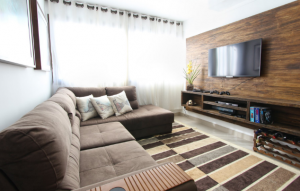 Nobody feels safe walking out, let alone sitting at a crowded workplace as a result of the rapid spread of this virus. Ensure you place sanitizers around your house especially in your home office. Most workers have a fear of contracting the disease that’s presently giving everybody sleepless nights while in the workplace.
Nobody feels safe walking out, let alone sitting at a crowded workplace as a result of the rapid spread of this virus. Ensure you place sanitizers around your house especially in your home office. Most workers have a fear of contracting the disease that’s presently giving everybody sleepless nights while in the workplace.
 Prevent mold
Prevent mold Be sure to empty
Be sure to empty 
 After using a period to compare the real estate market with additional
After using a period to compare the real estate market with additional 





 Even more spectacular effects can be achieved with exposed aggregates using innovative methods, such as contrasting different aggregates or altering smooth surfaces with regions processed with exposed aggregates. Some use strips of concrete with wood as dividers to create accents. The possibilities in terms of design are almost unlimited. From what you can be sure of, this procedure will give you better value for money. The use of concrete to construct commercial properties is much more preferable than the vast collection of additional building materials for its many environmental and ecological advantages.
Even more spectacular effects can be achieved with exposed aggregates using innovative methods, such as contrasting different aggregates or altering smooth surfaces with regions processed with exposed aggregates. Some use strips of concrete with wood as dividers to create accents. The possibilities in terms of design are almost unlimited. From what you can be sure of, this procedure will give you better value for money. The use of concrete to construct commercial properties is much more preferable than the vast collection of additional building materials for its many environmental and ecological advantages.